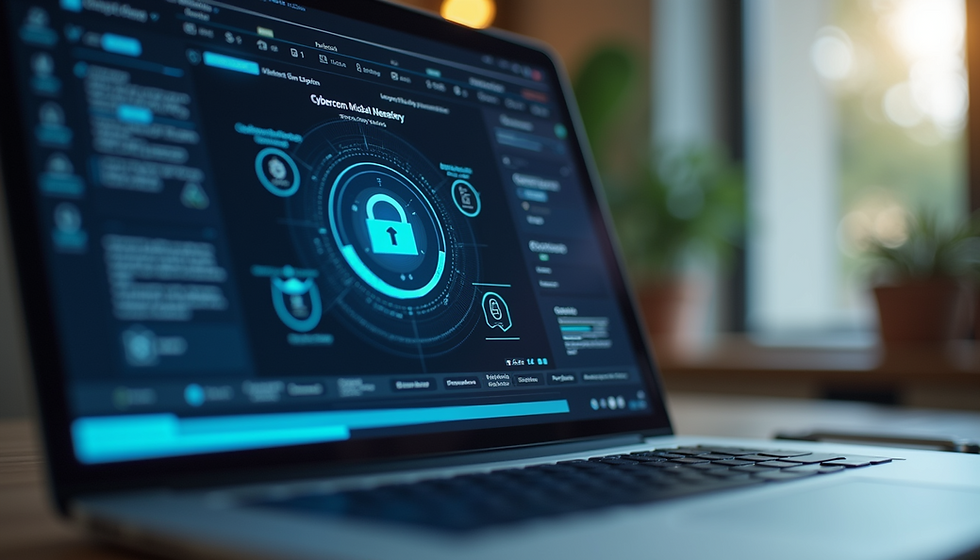Preparing for Windows 10 End of Life Transitioning to Windows 11 for SMB Owners and End Users
- John W. Harmon, PhD

- Jun 20
- 4 min read
As Microsoft announces the end of support for Windows 10, small and medium-sized business (SMB) owners and individual users face a crucial decision regarding their operating system. Transitioning to Windows 11 can feel overwhelming, but with the right preparation and knowledge, it can be smooth and manageable. This blog post provides insights into the end-of-life announcement for Windows 10, highlights the advantages of migrating to Windows 11, and offers practical steps for a seamless transition.
Understanding Windows 10 End of Life
In October 2025, Microsoft will officially mark the end of life for Windows 10. After this date, the operating system will no longer receive critical security updates, bug fixes, or technical support. Continuing to use an unsupported system increases the risk of cyber threats. A staggering 60% of data breaches occur due to unpatched vulnerabilities in outdated systems.
For SMB owners, using an outdated system can lead to compliance issues, especially with regulations governing sensitive data like GDPR. Prioritizing an upgrade strategy is essential not just for security, but also for maintaining productivity and regulatory compliance.
Why Transition to Windows 11?
Windows 11 introduces several features and improvements over Windows 10 that enhance user experience and security. Here are several reasons to consider the transition:
Enhanced Security Features
Windows 11 delivers stronger security measures. Features like hardware-based isolation and secure boot protect both personal and business information. Research indicates that organizations using Windows 10 without these features were 47% more likely to experience a security breach.
Improved User Experience
The revamped user interface of Windows 11 makes navigation more intuitive. Elements such as widgets and a redesigned taskbar simplify access to frequently used applications. This design change can increase productivity by up to 30% through better multitasking capabilities.
Performance Enhancements
Windows 11 is designed for speed and efficiency. Users have reported boot times that are up to 25% faster compared to Windows 10. Additionally, optimized resource management can lead to improved battery life—up to 20% in some devices—helping employees remain productive throughout the day.
Compatibility with Future Applications
As technology advances, software developers are increasingly focusing on Windows 11. Transitioning ensures that your business remains compatible with new applications, avoiding the frustrations of software being unavailable or unsupported in the future.
How to Prepare for the Transition
Preparation is vital for a successful migration from Windows 10 to Windows 11. Here are key steps to guide you through the process:
Assessing System Requirements
Before upgrading, confirm that your hardware meets the following minimum specifications for Windows 11:
Processor: 1 GHz or faster with at least 2 cores on a compatible 64-bit processor or SoC
RAM: 4 GB or more
Storage: 64 GB or larger storage device
TPM: Trusted Platform Module (TPM) version 2.0
Graphics: DirectX 12 compatible graphics / WDDM 2.x
If any of your devices fall short of these specs, it may be time to invest in new hardware or upgrade current devices to ensure compatibility.
Backup Important Data
Data loss can be catastrophic for SMBs and individual users. Before migrating, make sure to back up essential files, documents, and applications. Utilize both cloud storage solutions and external hard drives for comprehensive data protection, ensuring recovery capabilities if things go wrong during the transition.
Create an Upgrade Plan
Develop a well-defined upgrade strategy. Consider timelines, allocate resources, and determine whether to implement the transition all at once or in stages. A phased approach allows for minimal disruption to daily operations and provides opportunities to address issues as they arise.
Educate Team Members
Training is crucial when introducing a new operating system. Provide team members with training sessions that cover Windows 11's new features and functionalities. Ensuring everyone is comfortable with the system can boost productivity and ease concerns during the transition.
Monitor the Transition
After upgrading, keep a close watch on system performance and gather user feedback. Address any issues that surface promptly to ensure a smooth experience. Document any challenges and solutions to improve future transitions for your business.
Navigating Potential Challenges
Upgrading to a new operating system can encounter various obstacles. Here are common issues and solutions to consider:
Compatibility Issues with Applications
Some legacy applications may not be compatible with Windows 11. Conduct an application audit prior to transitioning, and communicate with software vendors to ensure compatibility. This proactive approach will save time and frustration during the upgrade.
Training Needs for Users
Employees may need time to adjust to the new operating system. Offer tailored training sessions focused on the specific features that will benefit your team. This investment in training can significantly reduce resistance and boost productivity during the transition.
Resistance to Change
Change can be daunting. Address concerns head-on by communicating openly about the benefits of Windows 11 and providing ongoing support. Encourage feedback and be prepared to offer solutions to any issues your team may face, fostering a more positive attitude towards the upgrade.
Embracing the Future with Windows 11
The end of life for Windows 10 puts SMB owners and individual users at a crossroads, but transitioning to Windows 11 can bring numerous advantages. By understanding Microsoft’s announcement and preparing thoroughly, users can make the shift smoothly while capitalizing on the benefits of a modern operating system.
In today's fast-paced digital landscape, staying current is not just a choice; it's vital. Choosing Windows 11 means prioritizing security, efficiency, and productivity—all crucial elements for success in our technology-driven world.
Get ready today and confidently embrace your digital future.




Comments